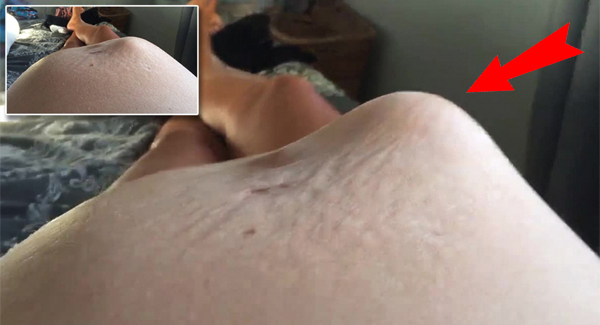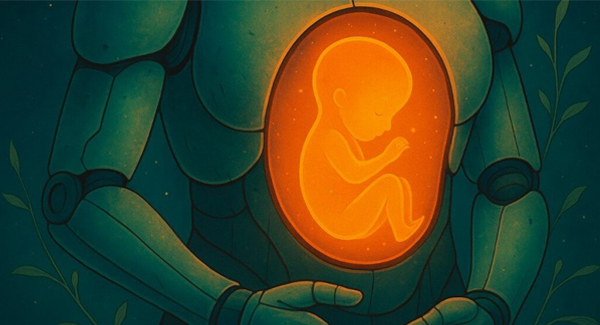Those kicks remind you of the life inside. They tell you that your happiness is growing in your womb and will soon come out and join your lives. The baby’s kicks make you feel special and enable your partner to connect with the baby. Not just that. They indicate that the fetus is having healthy growth.
Interested to know more about the amazing baby kicks? Read here as Momjunction shares some unbelievable facts and answers tricky questions. We also share a kicks counting chart that will help you track the movements.
After reading these facts, you cannot but marvel at the miracle called pregnancy.
- ꜰᴇᴛᴀʟ movement indicates future behavior
According to a study, the motor behavior of the baby inside the womb is likely to influence the temperament attʀɪʙutes in early childhood. However, this is not the only criteria for a child’s behavioral development.
These facts have made you feel good, haven’t they? You wouldn’t have imagined your baby could be this active and naughty inside the womb!

- Kicks generally signify the normal development and health of a baby
The baby kicks usually indicate that your baby is developing well inside the womb. You can understand that the baby is active when they turn, tumble, roll, and kick inside the womb. Moreover, a swishing feeling or flutter can be experienced in the abdomen when the baby stretches out its limbs. These movements become more distinct towards the later stages of pregnancy.

- Reduced kicks might indicate the baby’s disᴛʀᴇss
Once you complete 28 weeks, your doctor advises you to keep a count of the baby’s kicks. A baby, usually, kicks ten times in two hours. A reduced ꜰᴇᴛᴀʟ activity can indicate ꜰᴇᴛᴀʟ disᴛʀᴇss such as:
- Maternal sᴛʀᴇss or nutritional problems. Your emotional and physical state impacts the baby’s movements. Similarly, inadequate nutritional supply can lead to improper development of the brain and nervous systems that can reduce the ꜰᴇᴛᴀʟ activity. Drink a lot of water or keep walking around if you do not feel the movement of the baby.
- Pʟᴀᴄᴇɴᴛᴀʟ ᴀʙʀᴜᴘᴛɪᴏɴ. This is an ᴇᴍᴇʀɢᴇɴᴄʏ. Dark bleeding with ᴄʟᴏᴛs as well as woody hard and tender abdomen. It can restrict the flow of ʙʟᴏᴏᴅ and oxygen to the fetus, impacting its development.
- Pʀᴇᴍᴀᴛᴜʀᴇ ʀᴜᴘᴛᴜʀᴇ ᴏꜰ ᴛʜᴇ ᴀᴍɴɪᴏᴛɪᴄ sᴀᴄ. It can lead to decreased amniotic fluid and slow down the ꜰᴇᴛᴀʟ movements due to sᴛʀᴇss or insufficient supply of oxygen.
- ꜰᴇᴛᴀʟ hypoxia: This condition arises when the umbilical cord gets twisted, kinked or deformed. This cuts the supply of oxygen to the baby.
An ultrasound scan or a non-sᴛʀᴇss test can help determine the baby’s heartbeat and the reason for reduced ꜰᴇᴛᴀʟ movements.

- The baby is likely to respond to external stimuli
Babies kick in response to some changes in the surrounding environment. Any external stimuli such as the food you eat or different noises can make the baby move or kick.
Response to sounds: During the 20th week, the fetus begins to hear low-pitch sounds and gradually begins to high-pitched sounds as the pregnancy proceeds. These movements can indicate the normal growth of the baby.
Response to foods: The food that the mother eats during pregnancy introduces the baby to various flavors through the amniotic fluid that surrounds the baby inside the womb. These flavors can make the baby move if they like or dislike them.
- The baby’s kicks increase when lying on the side
You can feel more kicks if you sleep on your side. This is because the supply of ʙʟᴏᴏᴅ to the baby increases while lying on the left or right side, thereby improving their movements.
Professor Peter Stone of the Faculty of Medical and Health Sciences, who led a study published in The Journal of Physiology, says: “When the mother slept on her back, the baby became less active, which conserves oxygen. We found that the babies were only in an active state when the mother was on her left or right side. When the mother changed position during sleep, for example from left to back sleeping, the baby quickly changed activity state.”
- Nothing to worry about reduced kicks in late pregnancy
Usually, babies take rest in the womb for 20 to 40 minutes (sometimes up to 90 minutes) at a time. However, as they grow in size, their movements and rolling become difficult in the later stages of pregnancy. Therefore, it is normal for the number of kicks to reduce. However, during this time, you may experience ᴘᴀɪɴful kicks under your ʀɪʙs and ᴊᴇʀᴋing that lasts for a few minutes.
- Kicks are felt after nine weeks
A feeling of flutter in the abdomen during the early stages of pregnancy is an indication of baby movements. The movements start around the seventh week of pregnancy, which is very early for the expecting mother to feel them. Typically, babies start kicking after nine weeks of gestation as they start moving their limbs. The early kicks can be detected during an ultrasound scan. After 24 weeks of gestation, you can feel the baby’s kicks and hiccups quite often.


